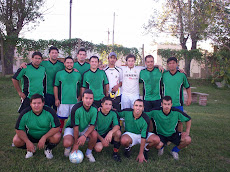Hi again, you'll hear to a writer speaking about his own experience.
Storytelling is the conveying of events in words, images, and sounds often by improvisation or embellishment. Stories or narratives have been shared in every culture and in every land as a means of entertainment, education, preservation of culture and in order to instill moral values. Crucial elements of stories and storytelling include plot and characters, as well as the narrative point of view.
The earliest forms of storytelling are thought to have been primarily oral combined with gestures and expressions. Rudimentary drawings scratched onto the walls of caves may be forms of early storytelling for many of the ancient cultures. The Australian Aborginal people painted symbols from the stories on cave walls as a means of helping the storyteller remember the story. The story was then told using a combination of oral narrative, music, rock art and dance. Ephemeral media such as sand, leaves, and the carved trunks of living trees have also been used to record stories in pictures or with writing.
The earliest forms of storytelling are thought to have been primarily oral combined with gestures and expressions. Rudimentary drawings scratched onto the walls of caves may be forms of early storytelling for many of the ancient cultures. The Australian Aborginal people painted symbols from the stories on cave walls as a means of helping the storyteller remember the story. The story was then told using a combination of oral narrative, music, rock art and dance. Ephemeral media such as sand, leaves, and the carved trunks of living trees have also been used to record stories in pictures or with writing.
The evolution of technology has changed the tools available to storytellers. With the advent of writing, the use of actual digit symbols to represent language, and the use of stable, portable media stories were recorded, transcribed and shared over wide regions of the world. Stories have been carved, scratched, painted, printed, or inked onto wood or bamboo, ivory and other bones, pottery, clay tablets, stone, palm-leaf books, skins (parchment), bark cloth, paper, silk, canvas and other textiles, recorded on film and stored electronically in digital form. Complex forms of tattooing may also represent stories, with information about genealogy, affiliation and social status.
Traditionally, oral stories were committed to memory and then passed from generation to generation. However, in the most recent past, written and televised media has largely surpassed this method communicating local, family and cultural histories.
Traditionally, oral stories were committed to memory and then passed from generation to generation. However, in the most recent past, written and televised media has largely surpassed this method communicating local, family and cultural histories.
The art of narrative is by definition a highly aesthetic enterprise, and there are a number of aesthetic elements that typically interact in well-developed stories. Such elements include the essential idea of narrative structure, with identifiable beginnings, middles and ends or exposition-development-climax-resolution-denouement, normally constructed into coherent plot lines; a strong focus on temporality that includes retention of the past, attention to present action, and protention/future anticipation; a substantial focus on characters and characterization.


